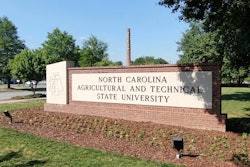I’m honored to have contributed to a piece recently published in the 2012 summer edition of The Review of Higher Education. The article focuses on efforts to diversify graduate education at research-intensive universities across the country. While underrepresented minority students comprise about a quarter (and growing) of the nation’s undergraduate population, just 11 percent of science, technology, engineering, and math (STEM) doctoral degrees were granted to minorities in 2009.
Most readers know that building a diverse student body doesn’t happen by accident. And though there is much effort invested in and discussion about undergraduate recruitment and admissions, there is a lesser known group of individuals working to build a diverse student body of entering graduate students: Graduate Diversity Officers.
While there is some precedent for the work of GDOs—think minority recruitment staff in undergraduate admissions offices or the recent establishment of “Chief Diversity Officers” among senior campus leadership—attempts to diversify the graduate ranks is a special and challenging professional niche.
Graduate Diversity Officers don’t exist on every campus, although they should. In 2008-09, my fellow researchers and I identified and interviewed 14 GDOs on 11 university campuses in an effort to understand just how they go about their charge to attract, enroll, and support diverse graduate students at predominantly White institutions.
Unlike undergraduate admissions conducted by trained, professional staff, GDOs have no role in the actual selection of graduate students; that privilege is conferred on faculty alone.
Most GDOs are instead charged with attracting potential students to apply to their university, which often includes guidance through the admissions process and, in many cases, support for these students once they are enrolled. Such support may include applying for grants to bring in scholarship dollars, helping students identify alternative sources of financial aid, and providing academic and social enrichment opportunities—all of which are meant to keep students enrolled and on track to graduation.
Graduate Diversity Officers Face Common Challenges
Given the diverse landscape of American research universities and the decentralized academic departments therein, the work of GDOs as institutional agents is anything but uniform. In many cases, GDOs are swimming against the tide to bring women and minority students into graduate departments made up of an international, White, and male student majority—a scenario most commonly found in STEM fields.
Some of the GDOs we spoke with faced other significant challenges, including limited support from senior administration, a lack of resources to do their job well, and departmental and institutional climates that are unwelcoming to the very students GDOs are attempting to attract.
GDOs further echoed what higher education research has shown in recent decades: meaningful change in the makeup of any student body requires more than numbers alone and more than lukewarm support for diversity. True institutional commitment doesn’t just mean, “we need more students of color,” but, rather, “let us create a supportive campus culture and welcoming climate for students of color.” Such support must be broadly advertised and understood—from the president of the university on down to departmental chairpersons and individual faculty members.
Of course, it takes more than rhetoric. As a former admissions officer myself, I know that effective minority recruitment is a fine art. Recruitment at the graduate level is a completely different—if not much more challenging—animal. GDOs wear multiple hats: fundraiser, networker, supreme relationship-builder, political navigator, and, at the end of the day, mother or father-figure to the graduate community they build.
Relationship Building is Key to Success
This type of graduate recruitment is incredibly time consuming in that the work is all about relationships. It’s building pipelines between diverse campuses and the GDO’s home campus, helping to create relationships across faculty bodies, cultivating faculty champions for diversity within a wide spectrum of academic departments, putting in face-time around the country, and then finding support on campus for the students whom GDOs enroll.
The GDOs we interviewed had varying levels of support, yet those who felt most effective in their work reported to senior-level administration, were not paid with “soft” funds, received an adequate budget to carry out their work even in times of financial strain, had the respect of faculty, were already on a diverse campus, and/or were part of an institutional culture that celebrated diversity.
While our study looked at GDOs working across disciplines, research universities must take seriously the need to recruit women and minority students into STEM Ph.D. programs—a task not easily accomplished without an institutional agent working to attract diverse students from undergraduate institutions and workplaces across the country and ensuring adequate financial, academic, and social support for students once enrolled.
Faculty-led diversity student recruitment is important, but it is not enough. Faculty do not have the time and, in many cases, the expertise to execute a sophisticated diversity recruitment plan alone. Nor should they have to. By building genuine partnerships with skilled GDOs, STEM departments can fast-track their diversity goals and help create a supportive community for students with potential long-term impact for the university at large.















